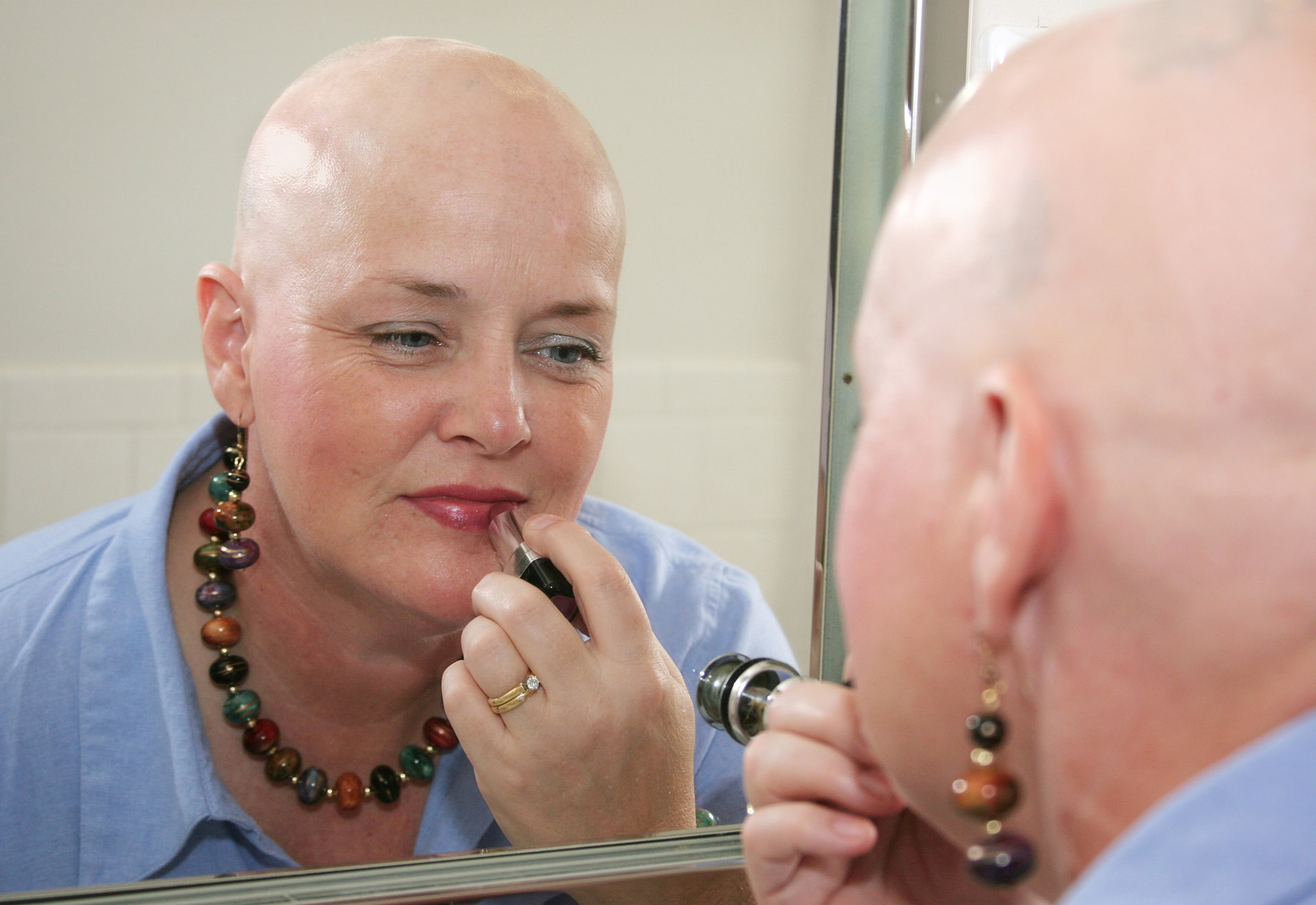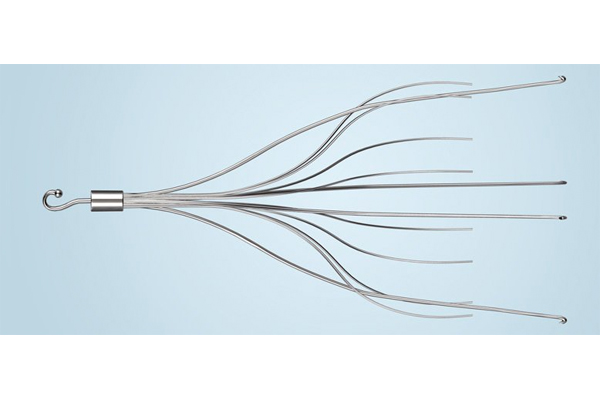
The U.S. Food and Drug Administration (FDA) has received more than 1,000 adverse event reports involving Inferior Vena Cava (IVC) filters and a growing number of lawsuits are being filed against IVC manufacturers BARD and Cook Medical for several of their products including Bard Recovery, Bard G2, Bard G2 Express, Cook Gunther Tulip, and Cook Celect.
Allegations against the developers of these IVC filters revolve around the medical devices falling out of place or breaking apart within the body, and the fragments migrating, causing severe internal damages to vein walls and internal organs such as the heart and lungs. Lawsuits also note that the manufacturers failed to warn patients and physicians about the potential hazards of IVC filters.
These issues have been linked to retrievable IVC filters and their surgical removal has been a topic surrounded by much controversy. In 2014, the FDA released a safety communication notifying doctors to remove retrievable IVC filters within two months after a patient was no longer at risk of pulmonary embolism; a medical condition the devices are designed to protect against.
Now, a new study published in Circulation: Cardiovascular Interventions found that it becomes harder to remove the IVC filters the longer they are left implanted, with this further resulting in health problems and the need for more invasive retrieval techniques.
What we already knew about IVC filters.
This isn’t the first time the failing of IVC filters and their removal – or lack thereof – have been scrutinized by reputable organizations. A study published in 2010 in the Archives of Internal Medicine found that the Bard Recovery Filter had a failure rate set at 25% and the Bard G2 at about 12%.
Additionally, JAMA Internal Medicine published in July 2015, a study conducted at a single medical center which revealed that out of 648 procedures, 14.7% required advanced techniques to retrieve the devices after routine attempts had failed.
These studies have only validated concerns set forth by plaintiffs and those injured by the harmful devices.
What the new study warns against.
The newest study published in Circulation: Cardiovascular Interventions was completed by a group of researchers from Northwestern University Feinberg School of Medicine. The group analyzed data from IVC filter retrieval procedures that took place between 2009 to 2015.
One of the most notable points of the research was that out of 762 procedures, the most common filter retrieved was of the Cook Celect variety.
The researchers also uncovered an alarmingly high retrieval failure rate of nearly 41% when the devices had been left in patients for over seven months. The failure to properly retrieve the IVC filters also led to an increased risk of other injuries such as groin hematoma or harming of the inferior vena cava itself.
It was understood that the longer the medical device had been left implanted within the patient, the more difficult the retrieval process, which would ultimately require patients to obtain services at a more advanced facility.
What are some of the risk of retrieving IVC filters?
While having the medical devices implanted within the body is risky enough, the removal of IVC filters come with their own potential concerns including:
- Damage to the vena cava
- Damage to internal organs
- Migration of IVC filter pieces to the heart or lungs
- Loss of the filter in the body
- Source of a new clot
In scenarios where patients cannot have their IVC filter removed because of its dangerous proximity to organs or arteries, they must commence a blood thinning treatment – the same type of treatment the IVC filters were meant to help them avoid.
Let the national litigation team of Hotze Runkle PLLC help you take legal action against the manufacturers of defective IVC filters.
If you or a loved one has suffered physical, emotional, and financial complications due to an IVC filter, Hotze Runkle PLLC is here to help. Contact us today at (877) 919-0830.
Our team of experienced and knowledgeable attorneys is dedicated to fighting for the justice you deserve. Allow us to review your experiences and determine if your case qualifies for compensation.

There are side effects that breast cancer patients can expect when undergoing chemotherapy, with hair loss being among the most common.
One thing that eases the strain of these treatments and their byproducts is the knowledge that the effects are temporary and that patients can expect a return to normalcy after completing them.
Unfortunately, for many breast cancer patients who were treated with the chemotherapy drug Taxotere, the hard times have continued. Many patients have completed treatment only to find that they have suffered from permanent hair loss, or also known as alopecia.
Lawsuits have begun to emerge, revealing that the manufacturer of this drug did not sufficiently warn patients or doctors about the risk of this side effect.
At Hotze Runkle PLLC, we understand that dealing with any type of cancer treatment is difficult enough and no one should have to face continued suffering after the treatment has been completed. Taxotere creator Sanofi-Aventis needs to be held accountable for their negligence.
Our team of experienced attorneys at Hotze Runkle PLLC want to provide you valuable information so that you can be better informed about the current situation should you find yourself affected by the drug.
Taxotere Allegations In-Depth
There are now more than 1,000 lawsuits undergoing pretrial coordination in the Eastern District of Louisiana centered around allegations that Taxotere caused autoimmune skin disease alopecia in breast cancer patients.
Plaintiffs charge that the drug, which was approved by the FDA in 1996, comes with a higher risk of permanent alopecia when compared to other equally effective chemotherapy drugs. One main point of contention for plaintiffs is that this information was not included on labeling for Taxotere until 2015.
This becomes even more damning for the defendants, Sanofi-Aventis, because regulators and patients in Europe were made aware of this potential side effect a decade earlier, in 2005.
Furthermore, Canadian labels were changed in 2012 to inform patients and other parties there.
It was only in the U.S. that Taxotere came with a vague note that “hair usually grows back” concerning any possible permanent hair loss.
Orders Addressing Discovery and Bellwether Trials
On May 15, a pretrial order instructed both plaintiffs and defendant to propose an order for a discovery schedule as well as dates for bellwether trials by May 26th.
Bellwether trials are a common feature of situations like this where so many lawsuits are directed against a single defendant. The trials will usually involve lawsuits that are representative of the majority of the other cases.
This is done to help all parties involved see whether there is strength behind a plaintiff’s claims. The results can be a good predictor of how future, related trials might be decided by juries.
A May 18th Case Management Order set a number of important deadlines concerning Personal Jurisdiction Discovery:
- By May 26, plaintiffs had to serve personal jurisdictional discovery in response to Sanofi’s motion to dismiss.
- Before June 2, 2017, the two sides would meet again and discuss any discovery that had been served.
- As of June 30, 2017, the defendants would respond and cite objections to discovery.
Another Case Management Order, on the 23rd of May, also addressed discovery. This order stated that any foreign merits discovery related to French Sanofi entities would also be served on the 26th of the month.
The deadlines currently set concerning discovery make it likely that the whole process will last until the early stages of Autumn. In this scenario, the first bellwether trials would likely begin in either November or December of this year.
It is important that everyone who has been affected by Taxotere, whether involved in a similar lawsuit or not, follow the developments around these cases.
Hotze Runkle PLLC is the support you need if you have been harmed as a result of taking Taxotere.
If you have been affected by Taxotere and are unsure about what your legal options are, contact Hotze Runkle PLLC today at (877) 919-0830. Our national litigation team can provide you with the guidance you need to sort through these difficult times.
Don’t face the shadow of Taxotere alone. Our attorneys have the experience you can trust to get the justice and compensation you deserve.

If you or a loved has fallen victim to severe injuries caused by dangerous drugs or medical devices like Xarelto, IVC Filters, or Taxotere then you may be aware that there are thousands of lawsuits all across the nation involving the manufacturers who have developed and marketed these products.There are some vital differences to note, however, between a traditional lawsuit and what is known as multidistrict litigation (MDL) case.
Hotze Runkle PLLC is a national litigation law firm dedicated to providing top tier legal advice and assistance to individuals and families during the most troubling times. We believe that by making the most out of informing our clients, we are better able to develop a trusting environment and clear lines of communication.
We would like to educate the reader on how MDL may affect you.
What is multidistrict litigation?
Multidistrict litigation (MDL) is a special civil procedure that occurs when a complex legal issue begins to affect a large quantity of people. In the cases of Xarelto, IVC filters, and Taxotere, for instance, thousands of claims have been made against the creators of these individual products.
Generally, cases that fall under MDL have a common issue and common parties.
In order to better manage the multitude of cases that occur all around the country, the federal court system will transfer all of them into a single district court. One court will manage all the discovery and pretrial processes for the lawsuits.
The first lawsuits of an MDL are known as bellwether cases and their rulings can greatly affect litigation for the remaining cases. These initial cases are specifically chosen to represent the circumstances of the majority of the other cases.
What is the purpose of multidistrict litigation?
There are a couple of reasons that the MDL system was established.
The intent of merging all of these cases into a single district court is to conserve court resources, allow litigation to be more efficient and also move forward more quickly. Additionally, this also saves time, money, and effort for the plaintiff (as well as the defendants).
As previously mentioned, a single court will go through the discovery process, which is the investigation that both parties conduct prior to going to trial. The court will set guidelines and rules that must be followed during the discovery process but which will allow for the parties to carry out depositions of witnesses, gather official documents, and submit interrogatories.
Another important element of the MDL is that it helps develop a consistency in rulings. If a single plaintiff is facing individual lawsuits all throughout the nation, then there is a high likelihood that a variety of different rulings will occur, which can negatively affect plaintiffs in the long run.
What companies are facing MDL for IVC filters?
There are two major IVC filter producing companies that are currently facing MDL because of filters that were defective and caused serious – and sometimes deadly – injury to patients.
One of those companies is Cook Medical, which has nearly 1,600 claims filed against it in the Indiana federal court. The lawsuits allege that the Cook Celect IVC Filter was sold to patients even as its potential to break apart and damage internal organs and veins was known by the company. While a number of these cases have been recommended for settlement, if the settlements do not occur, the bellwether cases will begin later this year.
Another IVC filter manufacturer facing litigation is Bard for a number of its products including the G2 IVC filter, Recovery IVC filter, Denali, Eclipse, and several others. Individuals who have had these medical devices installed have dealt with heart or lung perforation, internal bleeding, hemorrhaging, punctured vena cava veins, chest pains, shortness of breath, and other serious medical issues.
The presiding judge is looking to narrow down the bellwether trials to about six cases and hopes to begin litigation in late 2017.
Let the experienced national litigation team of Hotze Runkle PLLC help you take action if you or loved one has been injured by an IVC filter.
Hotze Runkle PLLC law firm is committed to helping those have been harmed by others find the justice they deserve. Don’t hesitate to reach out to us immediately.
If you or a loved one has suffered physical, emotional, and financial complications due to the implantation or retrieval of an IVC Filter, we are here are to help. Contact us today at (877) 919-0830.
We can help you recover damages to cover medical expenses, lost earnings, earning capacity, physical and emotional pain, and more.

Breast cancer patients have enough to consider when finishing up treatment and preparing to get back to their lives. The serious side effects of Taxotere, manufactured and marketed by Sanofi-Aventis, can make that much more difficult than it has to be.Sanofi-Aventis is facing the consequences, in the form of lawsuits, from breast cancer patients who used Taxotere and suffered alopecia – or permanent hair loss – as a result of the drug.
Plaintiffs contend that there was sufficient information for the company to provide a warning to all patients in the United States, yet failed to do so. Even more strikingly as similar warnings were issued to patients in other countries who were under treatment of the same drug.
Hotze Runkle PLLC is prepared to work for you and your family if you have suffered the debilitating side effects of Taxotere. We want to make sure that you receive the compensation you deserve for the physical and psychological damage you have gone through.
We also believe it is vital that patients be aware of Taxotere versus other options.
Taxol (Paclitaxel)
One French oncologist, Hugues Bourgeois, regularly recommends using Taxol as an alternative to Taxotere, as it is less likely to cause alopecia.
Dr. Bourgeois reported that there is a “negligible percentage” of severe alopecia cases associated with Taxol, making the frequency much lower than in patients who use Taxotere.
Like Taxotere, Taxol is a member of the taxane family of medicines. It is designed to stop cancer cells from repairing themselves and inhibit the growth of new ones. Both drugs operate the same way and there is no drop-off in quality when choosing Taxol.
In fact, there is plenty of evidence that suggests Taxol treats breast cancer more effectively and with fewer side effects.
In fact, the main difference exists in the manner in which Taxotere has been marketed. Taxotere only requires chemotherapy sessions to occur once every three weeks while Taxol requires a weekly dosage.
The dosing schedule is a major reason why Taxotere has been more frequently prescribed by physicians, despite the fact that serious side effects continue to be associated with its use.
Abraxane
The main ingredients in Taxol are dissolved by a solvent called Cremophor EL, allowing them to enter the bloodstream more effectively. The presence of Cremophor EL can make Taxol tougher to use for some patients. The possibility of a reaction is typically offset by additional medication taken before someone uses Taxol.
Abraxane avoids this issue by not employing a solvent. Instead, the drug’s main components are wrapped in albumin, which is the main protein found in someone’s plasma.
This makes it far less likely that a patient will have trouble tolerating Abraxane whenever they are given a dose. The need for additional medicine beforehand is also eliminated, which helps to limit potential side effects.
Like Taxol, there is a body of research that suggests that Abraxane is both safer and more effective in treating breast cancer, including avoiding the permanent hair loss associated with Taxotere.
Regardless of where you find yourself in your battle against cancer, you should know that you have options and your fate is not out of your hands.
You don’t have to quietly accept your situation if you have been left with permanent loss from using Taxotere. Hotze Runkle PLLC is here to make sure that the negligence and indifference on the part of Sanofi-Aventis does not go unpunished.
Taxotere has a history of leaving breast cancer patients struggling with permanent cases of hair loss, and yet the drug still continues to be heavily recommended and used. There are other medicines, including Taxol and Abraxane, that offer effective treatment and are safer for you.
You don’t have to face the challenges of piecing your life back together alone. The experienced national litigation team of Hotze Runkle PLLC is more than capable of fighting for your rights and your justice.
Contact us today at (877) 919-0830 to find out how we can provide the legal support you need to start the healing process.
 A woman bald from a health problem putting on makeup in the mirror.
A woman bald from a health problem putting on makeup in the mirror.
Although this treatment has presented itself as a superior option to other chemotherapy drugs such as Taxol, which offers similar results without a greatly increased risk of permanent hair loss, patients are having to deal with the consequences of going through Taxotere treatment without full awareness of its side effects.
Your national litigation firm, Hotze Runkle PLLC, wants to ensure that you are protected from the immoral and illegal actions of major pharmaceutical companies, like Taxotere maker Sanofi-Aventis, who try to take advantage of innocent people.
A Brief History of Taxotere
Developed and marketed by the French pharmaceutical company Sanofi-Aventis, Taxotere was first approved by the U.S. Food and Drug Administration (FDA) in 1996. While the drug has been prescribed for a number of cancers including non-small cell lung cancer, advanced stomach cancer, head and neck cancer, and metastatic prostate cancer, it has primarily been used as a treatment plan for breast cancer.
According to BreastCancer.Org, as of 2017, there were more than 3.1 million women with a history of breast cancer in the United States. The vast majority of these women, estimated at around 75%, were prescribed Taxotere as a part of their treatment plan.
Because the treatment plan for Taxotere calls for chemotherapy sessions only once every three weeks, in comparison to other drugs that require treatment sessions weekly, the drug was marketed as more effective and less time consuming – an attractive option to patients.
Taxotere has made manufacturer Sanofi-Aventis billions of dollars in profit.
Litigation Issues Against Taxotere
Lawsuits have emerged against Sanofi-Aventis accusing the pharmaceutical company of deliberately failing to disclose the risk of permanent hair loss in order to increase sales.
Various studies, some sponsored by Sanofi itself and others conducted by third party institutions, revealed that a higher percentage of women were likely to suffer permanent hair loss (alopecia) in comparison to other chemotherapy drugs such as Taxol.
This means that the company was fully aware of the life damaging risk of its drug, yet purposely avoided disclosing the dangers to patients.
Other claims against Sanofi include:
- Selling the drug without proper testing.
- Failing to warn healthcare providers.
- Misleading patients through advertisements.
- Falsely assuring patients of returning hair growth.
- Failing to provide adequate warnings on packaging.
Many of these allegations are specific to patients in the United States, as the drug was marketed in other countries with warnings about the potential for permanent hair loss. It was not until 2015 that FDA finally issued a warning in the United States about the potential risks associated with the drug. Prior to the FDA warning, Sanofi suggested that patient’s hair would regrow after treatment.
Additionally, studies suggest that Taxotere is less effective than another chemotherapy drug – Taxol. Evidence found shows that over 89% of women who received Taxol had a higher survival rate than those undergoing treatment with Taxotere.
Additional Chemotherapy and Alopecia Side Effects
Because of the strength of chemotherapy drugs within the human body, many adverse side effects are known to occur in certain patients including:
- Loss of appetite
- Nausea and vomiting
- Fatigue and drowsiness
- Pain at injection site
- Hair loss
- Diarrhea
- Infection
- Anemia
- Mouth or throat sores
- Numbness in fingers and toes
While hair loss does commonly occur with chemotherapy treatment, there are a number of symptoms that you should be aware of that may suggest you are being affected by alopecia:
- Loss of hair on entire body
- Loss of eyebrow and eyelash hair
- Baldness
Unnecessary Suffering
As if having to deal with breast cancer isn’t painful enough, Sanofi-Aventis has subjected women to an on-going, life-changing battle.
The impact of hair loss can greatly affect the quality of life, body image, social functioning, and self-esteem of women who have undergone chemotherapy. Even more so, these unfortunate women must also suffer the loss of or inability to work, which can have dire economic effects in their lives.
If you or a loved one has suffered through the painful and serious side effects of Taxotere, do not hesitate to contact the law offices of Hotze Runkle PLLC today at (877) 919-0830.
Our reliable national litigation team at Hotze Runkle PLLC are here to guide and support the women and cancer patient survivors who have been injured by Taxotere.
Your situation may mean you are entitled to compensation for your pain and suffering.

We as a nation, we have become familiar with news stories and exposés on dangerous medical devices and prescription drugs. Every years hundreds, if not thousands, of individuals suffer through life threatening situations because of products that have been marketed to consumers as safe and effective to treat their illness or health condition. From medical devices like IVC filters, to prescription anticoagulants like Xarelto, patients are often the last to learn that their treatments may be dangerous, or sadly, even fatal. While there are certain federal departments designed to regulate the approval of medications and medical devices that make it into the market, flaws within these systems allow for pharmaceutical companies and manufacturers to sell products that are not always thoroughly studied or understood.
At the law offices of Hotze and Runkle, we believe that the safety and physical well being of patients should be of the utmost importance to these various medical devices and drug creators. However, the reality is that the primary focus of many of these pharmaceutical companies is simply profit.
To understand how these dangerous medical devices and prescription drugs make it through governmental approval processes, there is some vital information that you should know.
The Gatekeepers: The Food and Drug Administration
The Food and Drug Administration (FDA) is the federal department tasked with regulating the approval of medications and medical devices that the public is able to purchase, including prescription and over-the-counter products.
Unfortunately, the FDA does not actually test the products, but rather analyzes clinical trials and data to make a decision on whether or not a product will be approved. This system is rather flawed and allows for many drugs and devices to make it to the market without undergoing adequate studies or trials.
To begin with, medications and medical devices are generally tested by the same companies that make them. This means that the FDA must rely on the accuracy and integrity of studies done by the same individuals who are seeking to make a profit off of the devices and drugs. As pharmaceutical companies cannot make a profit from products that do not have approval, it is in their self-interest to only report information that is suited to their own needs. Essentially, pharmaceutical companies will only report the data that will grant them FDA approval.
To make matters worse, the Government Accountability Office (GAO) has warned that the FDA lacks reliable resources to adequately staff, study, and track drugs and devices before they reach the market. This is further exasperated by the FDA’s impaired oversight of postmarket medications and medical devices.
More Than Just an FDA Problem
To make matters worse, there is an unsettling trend amongst federal legislatures that is providing the FDA with even less oversight abilities and further enabling pharmaceutical companies to release products that are not adequately studied.
One of the most recent examples of this has come in the form legislation known as the 21st Century Cures Act.
One of the last pieces of law signed by Obama, the Cures Act outwardly appears to be a landmark bill that would fund a number of health initiatives. The downside, however, is that the bill also cuts into the powers of the FDA, further deregulating the pharmaceutical and medical device industry.
One of the means by which this will occur is by allowing the FDA to quickly approve new technologies and drugs with even lower standards of evidence than what is currently set in place. While the FDA currently relies on clinical tests and randomized samples to ensure the safety and effectiveness of new products, the Cures Act would now allow them to approve an item based on observations, safety and side-effect claims, and post market clinical studies, rather than pre-market analysis and thorough consideration.
Proponents of the bill argued that the FDA system was ineffective and did not allow for growing medical technologies and medications to emerge on the market quickly enough. Now, the companies can bypass the entire process and submit documentation after patients have been subjected to the medication or medical device. These post market clinical studies often take place years after approval and few are ever completed.
Additionally, the 21st Century Cures Act would require the FDA to utilize a third party to review the safety of a product if a manufacturer makes changes to it. This would allow manufacturers to select and pay the third party for approval. This could obviously lead to huge conflicts of interests.
Don’t let the negligent and deceitful practices of IVC filter manufacturers scare you. Your injury and pain deserve justice. Let the legal representatives of Hotze Runkle PLLC serve your needs and provide you with the commitment of a team that can get the job done.
If you or a loved one has suffered adverse effects as a result of an IVC filter implantation, contact a team that fights to earn your trust—contact Hotze Runkle PLLC.
Our team of experienced and high qualified lawyers has the ability to make IVC filter manufacturers pay for the damaged they have caused. Reach us today at (877) 919-0830 to learn more about how we can put our years of experience to work fighting for you and your family.

Inferior vena cava (IVC) filters are designed to prevent blood clots in patients who cannot use blood thinners. While they have enjoyed widespread use for some years, there is a good deal of controversy that surrounds them as well.
To date, there have been thousand of reports of issues arising from the use and removal of these devices. IVC filters are susceptible to migration within the body and the procedure to remove even the most modern versions can still be very dangerous and difficult to perform.
The attorneys at Hotze Runkle PLLC take great pride in staying current on news related to the various legal services we provide so that our clients can be well-informed as well.
Recent information shows that the use of IVC filters is a medical topic that is under considerable scrutiny, and because of this, professionals in the medical field are beginning to reexamine the use of the devices and the frequency in which they are implanted in patients.
Decreases in Use
One encouraging sign regarding the potential health and safety hazards associated with IVC filters is that there continues to be a decline in their use. This drop in the number of IVC filters in use began in 2010 shortly after the FDA issued a safety alert about devices that had been implanted for an extended period of time.
This overall decrease, however, has not been uniform across the country. The Northeastern U.S. has seen the bulk of the reduction, due in part to a medical environment that sees more disputes find their way into the courts. Western states have also seen decreases, but the legal atmosphere of their medical world does not have such a contentious streak.
Southern states have not experienced the same cutbacks in IVC use, largely due to tort reforms. These changes have made it harder for plaintiffs in these cases, not only to win settlements but the size of the settlements has been capped as well.
Regardless of what part of the country you find yourself in, there is likely to be a facility specializing in the removal of IVC filters. As the use of IVC filters began to decline, the number of places a patient could go to have one taken out rose greatly.
Instances of Pulmonary Embolism (PE)
Another factor that may contribute to the decline of IVC filters is that new studies are calling into question the effectiveness the devices have had in reducing the rate of PE. One particular study, published in JAMA Surgery, documents how the sharp decline in IVC use in trauma has not resulted in a rise in PE rates.
This relationship calls into question how useful these devices are in helping prevent blood clots. The possibility that they do not have much influence over the number of PE cases is something that has become hard to ignore for many physicians across the country.
While the authors of the study do not advocate the complete discontinuation of IVC filter use, they do acknowledge that there is still research to be done into their implementation.
Finding the safest ways and situations to employ IVC filters is still something that eludes even the most inquisitive and well-intentioned medical minds, which is probably as telling as recommending they not be used.
There continue to be many positive signs regarding the removal of IVC filters from medical use.
Future patients deserve to be treated with alternatives that do not come with as many safety questions.
If you or your family are seeking help with IVC filter litigation, the attorneys at Hotze Runkle PLLC are here to find the solutions to your problems and get you the justice you’ve been searching for.
Unfortunately, there are still many in need of legal aid because of the medical and health complications they have faced due to the use of an IVC filter.
The attorneys at Hotze Runkle PLLC are committed to helping those have been harmed by IVC filters.
If you or a loved one has suffered physical, emotional, and financial complications, or even death as a result of an IVC filter, Hotze Runkle PLLC is here to help.
Contact us today at (877) 919-0830.
Please be aware that there is a statute of limitations which bars claims not brought within an allotted time period after the injury occurred. Please contact us today for a free case evaluation to review your legal options and ensure proper legal guidance in your time of need.

Inferior Vena Cava (IVC) filters are small, cage-like devices implanted in the IVC vein of patients who are at risk of bloods clots, but cannot use anticoagulants (blood thinners). The devices are designed to stop a rising blood clot before it reaches the heart or lungs of a patient.
Unfortunately, IVC filters have gained a high level of notoriety, as the FDA has received more than 1,000 adverse event reports involving the metal devices. There have been a substantial number of patient injuries and deaths from IVC filters malfunctioning within the patient’s body.
Alarmingly, reports suggest that a leading manufacturer of IVC filters was aware of the potential complications, yet still marketed and sold the devices.
Severe complications include:
- Filter fracture
- IVC perforation
- Damage to vital organs (i.e. lungs and heart)
- Heart blockage
- Death
At Hotze Runkle PLLC, we are committed to helping those who have suffered harm at the hands of negligent and deceitful manufacturers. Your injury and pain deserve justice. Let our legal representatives serve your needs.
Potential Symptoms of IVC Malfunctioning
If you are the recipient of an IVC filter and have been experiencing pain in various regions of your body, the following symptoms may suggest that the filter is malfunctioning or has been clogged with a blood clot.
Abdominal or Back Pain
The potential symptoms of a malfunctioning IVC filter vary from patient to patient with some cases having asymptomatic complications and others undergoing heart rhythm problems.<
One of the most commonly occurring signs of a IVC filter migration is abdominal and back pain. This can occur as a result of the IVC traveling throughout your blood vessels and lodging itself in an organ or other vein.
If the pain correlates with specific bodily movement, then the patient should visit a doctor and get examined to ensure that the filter has not moved from its intended location.
Pain in Lower Extremities
IVC filters help to reduce the risks associated with deep vein thrombosis (DVT) and are intended to prevent clots in the legs and pelvis from traveling up to the lungs and causing pulmonary embolism.
Because of this, patients may interpret pain in the legs as an issue of their DVT, but extreme pain should not rule out filter migration or perforation.
Furthermore, painfully swollen legs may show that the filter has become clogged.
Patients should visit their primary care provider if the issues continue for some time.
Symptoms in the Heart Area
If the filter has fractured and one of its struts has traveled into the heart, symptoms patients should watch for to include:
- Chest pain
- Neck pain
- Confusion
- Lightheadedness
- Nausea
- Shortness of breath
- Abnormally rapid heart rate
If the IVC filter remains embedded in the heart, then the following severe conditions can arise:
- Cardiac tamponade
- Hole in the heart
- Heart rhythm problems
- Stroke
- Hemorrhaging
- Internal bleeding
If the IVC filter has caused severe damage to the heart, then open heart surgery may be required to remedy the issue.
Asymptomatic Concerns
In many cases, the migration of an IVC filter may not be accompanied by any symptoms. As blood vessels to have any nerve endings within them, internal injuries may be asymptomatic—meaning producing no sign or symptoms.
These scenarios can be just as dangerous as patients may not even recognize they have a problem until receiving an x-ray or CT scan.
A minor movement by a IVC filter can lead to slight tears in major veins that can continue to grow over time until major issues arise and emergency invasive surgery is required.
Dealing with pain and medical complications as a result of an IVC filter? Let Hotze Runkle PLLC fight for you.
The attorneys at Hotze Runkle PLLC are committed to helping those have been harmed by IVC filters.
If you or a loved one has suffered physical, emotional, and financial complications, or even death as a result of an IVC filter, Hotze Runkle PLLC is here to help.
Contact us today at (877) 919-0830.
There is a statute of limitations which bars claims not brought within an allotted time period after the injury occurred. Please contact us for a free consultation to review your legal options and ensure proper legal guidance in your time of need. Hotze Runkle PLLC will review your experiences and determine if your case qualifies for compensation.

The removal of inferior vena cava (IVC) Filters has been a topic of great distress for doctors who are now attempting to remove the implants and for the patients who have undergone the procedure with hopes of it being temporary. IVC Filters are spider-like medical devices that were designed as a solution for those who cannot use blood thinning medications but who are at risk of a blood clot. The inferior vena cava is the large vein that supplies deoxygenated blood from the lower half of the body to the heart. Reports involving severe and disabling complications, including incidences in which the device migrated, titled, or became fractures and traveled through the body, have shed light on the dangers of IVC filters.
Most of these problems have been linked to the retrievable IVC Filters, or the devices designed to be removed after the risk of blood clot or pulmonary embolism has passed. Some of these removable IVC Filters have made the retrieval process difficult for doctors and their patients.
Identified Risks of Retrieving IVC Filters
Attempts to removal the IVC Filter can result in life-threatening health risks, such as:
- Damage to the vena cava
- Damage to internal organs
- Migration of IVC filter pieces to the heart or lungs
- Loss of the filter in the body
- Source of a new clot
The benefits of retrievable IVC Filters over permanent filters has been touted by manufacturers, but the very design of these filters may make them difficult to remove. In 2014, the FDA released a safety communication urging doctors to remove retrievable IVC Filters within two months after the risk of pulmonary embolism cleared. Doctors were finding that IVC Filters were too dangerous to attempt a removal or the filters simply could not be found.
In cases where individuals were told they could not have their IVC Filter removed due to close proximity to vital organs or arteries, these individuals had to start a life-long blood thinner regimen. They were also made aware that the device would pose a continuing threat as it could dislodge at any time and cause severe injury or death.
When a doctor is unable to successfully retrieve a filter via routine attempts there are four options available, all of which pose significant safety risks for the patient. The curved catheter technique, loop-and-snare technique, balloon-assisted technique, and forceps technique are all options to remove the IVC Filter. However, these pose risk of massive internal bleeding, migration of broken filters to the heart, and sudden death.
In July 2015, JAMA Internal Medicine published a journal which revealed data from a single medical center about IVC Filter removal. Of 648 procedures conducted, 14.7% of the cases required advanced techniques after routine attempts to retrieve the device failed. In that same year, the Journal of Vascular Surgery, another medical journal, published a study that noted in some cases of IVC Filter retrievable, the device simply could not be removed because it was moved from its original position.
IVC Filter Retrieval Complications and Complaints
Yannis B, an implant recipient from Athens, Greece had his Option™ ELITE Retrievable IVC Filter placed in February of 2016 in Massachusetts. The surgery took place prior to his leg amputation as a prevention against blood clot complications. Just four months later, Yannis returned to his doctor to have the filter removed. His doctor found the device to be tilted with the retrieval hook embedded in the wall of his IVC. The doctor was unable to remove the filter from its delicate and dangerous position. Yannis was able to have the filter removed after consulting with another doctor in January of 2017. The patient took legal action against Rex Medical for selling a defectively-designed medical device. Not only was the company accused of selling defective products, they were found to be negligent of warning about possible side effects. Many doctors have come forth with complaints about the challenges of removing IVC filters and finding that the devices tilt or become embedded in veins or vital organs.
Susan Karnstedt received a permanent Greenfield IVC filter in 1992 due to a history of blood clots. Over the years, she began to feel intermittent pain in her abdomen. In her case, the legs of the filter eroded through the IVC and punctured her intestines. These types of complications are believed to increase the longer the implant remains in place. After years of pain and unexpected medical results, Karnstedt sought out medical experts at Stanford Hospital. It was interventional radiologist William Kuo, MD at the hospital who discovered a creative way of safely removing the permanent device. After a non-invasive laser procedure, Karnstedt was IVC Filter-free. This may not be the case for many others who lack access to these specialists or who have already suffered the detrimental effects of IVC filters.
Hotze Runkle PLLC Takes Action Against IVC Filters
We are committed to helping those have been harmed by others find the justice they deserve. Don’t hesitate to reach out. If you or a loved one has suffered physical, emotional, and financial complications due to retrieval of an IVC Filter, Hotze Runkle PLLC is here are to help. Contact us today at (877) 919-0830.
There is a statute of limitations which bars claims not brought within an allotted time period after the injury occurred. Please contact us for a free consultation to review your legal options and ensure proper legal guidance in your time of need. Hotze Runkle PLLC will review your experiences and determine if your case qualifies for compensation.
 A eye-opening study conducted by the Institute on Domestic Violence and Sexual Assault (IDVSA) at the University of Texas at Austin School of Social Work, and released in late 2016, revealed a startling discovery—Texas had more than 300,000 cases of human trafficking victims, including almost 79,000 minor and youth victims, and over 230,000 adult victims of labor trafficking.
A eye-opening study conducted by the Institute on Domestic Violence and Sexual Assault (IDVSA) at the University of Texas at Austin School of Social Work, and released in late 2016, revealed a startling discovery—Texas had more than 300,000 cases of human trafficking victims, including almost 79,000 minor and youth victims, and over 230,000 adult victims of labor trafficking.
Human trafficking is generally defined as a person being deceived or physically, emotionally, or psychologically coerced into situations of prostitution, forced labor, or domestic value. The United States Department of State considers human trafficking to be a form of modern-day slavery and punishes perpetrators severely; in Texas a convicted offender can receive a sentence of five years to life, substantial fines, restitution to victims, and possible asset forfeiture.
Texas statutes prohibit a number of activities related to the trafficking of humans including: recruiting, transporting, enticing, and providing.
Understanding the Problem
One of the biggest problems of understanding the complications of human trafficking has been to adequately track data. Most databases are only able to provide information on identified victims, which only helps to offer slight insight into the greater problem.
To better address the dilemma of human trafficking, especially in the state of Texas, which is a hub for human trafficking in the nation, the initiative known as the Statewide Human Trafficking Mapping Project of Texas was developed. Various agencies including IDVSA, the Bureau of Business Research at IC2 Institute at UT, and Allies Against Slavery, joined together to better understand the pervasiveness of human traffickings and its socioeconomic impact on the state.
With funding provided by the Criminal Justice Division at the Texas Office of the Governor, researchers were able to analyze numerous databases, work with social service agencies that assist victims, and develop other methods to track human trafficking cases more effectively.
While the authors of the study did note that their estimates were conservative, they hoped that their findings would still be able to offer some support in helping law enforcement agencies better deal with such a devastating and complex crime.
An Unfortunate Reality
The IDVSA research exposed some dismal benchmarks for human trafficking in the state of Texas including:
- An estimated 313,000 victims of human trafficking reside in Texas
- Children and young adults who are homeless or in foster care have the highest risk of falling victim to human traffickers
- The largest number of victims in labor trafficking were found in construction, cleaning services, and restaurant kitchen work
- $600 million is exploited from victims of labor trafficking in Texas
- An estimated $6.5 billion is spent on the lifetime costs of care to victims and survivors of minor and youth trafficking in Texas
Bruce Kellison, Director of the Bureau of Business Research stated, “The economic and social costs of human trafficking in Texas emphasize the importance of preventative solutions and help inform how to prioritize resources to support those who have experienced exploitation.”
When Tragedy Strikes
One of the most recent landmark human trafficking cases in Texas includes a Houston motel that has been accused of knowingly accommodating human traffickers and their victims, and which now faces a civil lawsuit filed by the victim’s family including two younger daughters. The lawsuit against Plainfield Inn, located in Southwest Houston, will be the first of its kind in Texas.
KHOU 11 News reported that the lawsuit claims the owners of the hotel were aware of prostitution, human trafficking, and other criminal activities occurring on their property, yet willingly continued to rent rooms to known criminals. The lawsuit also states that Houston Police responded to over 400 calls in just a two-year period at the Plainfield Inn for numerous crimes.
The news station confirmed that the motel has been sued multiple times by the city and state in an attempt to “clean it up.”
To better develop a case against the defendants, investigators will be able to utilize hotel records, which provide evidence of which rooms were rented out to human trafficking criminals and their victims. Phone records will also help to link traffickers to their victims and to confirm the timeline of events.
If you or a loved one fallen victim to human trafficking, contact the law offices of Hotze Runkle PLLC toll-free today at 877-919-0830. Our attorneys can help you find the justice you deserve.
